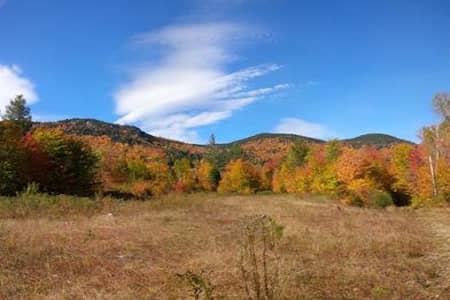Pasture Clearing for New England Homesteads: Stumps, Soil & Sequencing

Expanding or restoring pastureland in Vermont’s rugged landscape is both rewarding and demanding. Clearing land for livestock or hay production takes more than just cutting down trees—it requires careful sequencing, responsible brush disposal, and soil preparation that respects the environment. At Stillwater Forestry, we’ve helped countless landowners navigate the unique challenges of pasture clearing in Vermont, ensuring their new pastures are productive, erosion-resistant, and built to last.
1. The Sequence of Smart Pasture Clearing
Every successful pasture begins with a solid plan. That plan starts by identifying which areas should remain wooded and which can be cleared for grazing or cultivation. A well-sequenced approach prevents wasted effort and keeps the soil stable through every phase.
Once boundaries are established, the process typically moves through three key stages:
- Tree Removal and Stump Grinding: Trees are felled and stumps removed or ground down, depending on soil goals and equipment use.
- Brush Disposal: Leftover branches and vegetation are managed through chipping, controlled burning, or hauling—whichever best fits the site.
- Grading and Erosion Control: The land is shaped for proper drainage, minimizing runoff, and maintaining soil health.
This sequence ensures that each step supports the next, creating a smooth transition from dense woodland to open, usable pasture.
2. Soil Matters: Working With Vermont Terrain
The rocky soils and steep slopes of New England demand special attention during pasture clearing. Disturbing too much topsoil can trigger erosion or nutrient loss, especially during spring thaws. That’s why Stillwater Forestry places a strong emphasis on erosion control techniques.
We often recommend leaving some root systems intact on slopes, using straw or mulch barriers, and contour grading to manage water flow naturally. Healthy, stable soil gives your pasture a strong foundation for years of growth.
3. Timing the Seed: The Role of Season and Sequence
After clearing and soil prep, seed timing becomes the final critical step. Vermont’s short growing season means you need to act fast once the soil is ready. Seeding too early risks frost damage; too late, and your grass won’t take root before the first freeze. Early fall is often ideal, giving new pasture seed enough warmth and moisture to germinate without competing with weeds.
Choosing the right seed mix also matters. Cool-season grasses like orchardgrass or timothy thrive in Vermont’s climate, providing dense, nutritious forage and strong root systems that help with long-term erosion control.
4. Professional Forestry Services You Can Trust
Clearing land for homesteading can seem daunting, but with top-notch forestry services you can trust in Vermont, your project can move forward efficiently and responsibly. Stillwater Forestry combines experience, precision equipment, and a deep respect for Vermont’s ecosystems to deliver results that align with both your goals and the land’s natural balance.
If you’re ready to turn wooded acreage into thriving pasture, let Stillwater Forestry help guide your project from planning to seeding. Contact us today for expert forestry services and professional pasture clearing in Vermont that bring your homestead vision to life.
Are You Looking for Forest Management Services in New Hampshire or Vermont? Contact Stillwater Forestry Today!